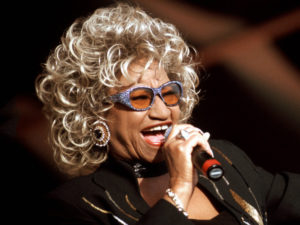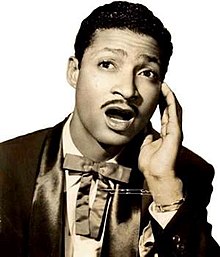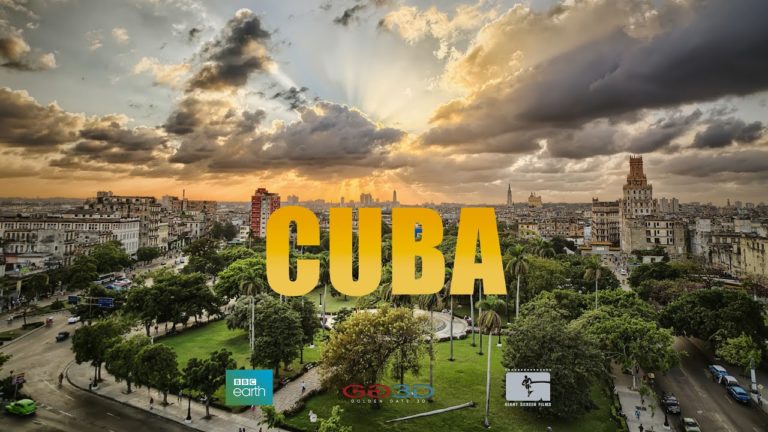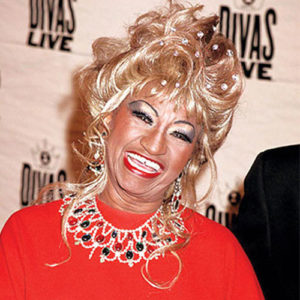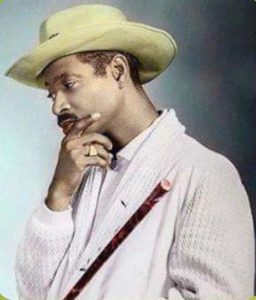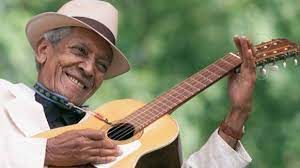FOUR OF THE BEST ARTISTS PERFORMING THE “SON CUBANO”. PHOTOS / VIDEOS.
In this short article, we want to talk to you about the best interpreters of the world-famous “Son Cubano”. We hope that this information will serve to broaden your musical knowledge and the Cuban cultural level.
Úrsula Hilaria Celia de la Caridad Cruz Alfonso, better known only as Celia Cruz, was one of the greatest artists of the Cuban Son. Celia was born in Havana, Cuba, on October 21, 1925.
As a young woman, she studied to be a teacher, and she always participated in radio show competitions. In one of these radio programs, Celia Cruz gets her first prize. Years later, the Cuban son singer enrolls in the National Conservatory of Cuba to formally study music.
Later, Celia ventures into the entertainment world singing in nightclubs and cabarets in Havana. Already in 1950, Celia Cruz was part of the extraordinary group La Sonora Matancera, and from there, her name was born as ‘Reina de la Salsa’.
With this Orchestra she moved to Mexico in 1959, and in 1961 she married the trumpeter of the orchestra, Pedro Knight, and settled in North America.
The great singer Celia Cruz goes from being a Cuban son and rumba singer to being a great salsa singer and improviser. She participated with Larry Harlow at Carnegie Hall in 1973, with the show Salsopera.
She then participates with the Stars of Fania, and in 1974 she recorded with Johnny Pacheco the album titled Johnny and Celia. Celia’s participation occurred on hundreds of stages, and with stars such as Willie Colon, Ray Barreto, Oscar de León, and countless Salsa stars.
Celia dies in Fort Lee, New Jersey, the United States on July 16, 2003.
Bartolomé Maximiliano Moré, better known only as Benny Moré, was born in San Isabel de las Lajas, Cuba, on August 24, 1919.
At the age of 16, this artist was part of the Serio de Cuba group. He later moved to the cane fields with his brother to work, and there he met Castellano and Víctor Landa, who trained him to play the guitar.
In 1936 he moved to Havana, where he works selling fruits and medicinal herbs. Until the end of the 1930s, the Cuban son artist began to play in the streets, bars, and other public spaces in order to support himself.
In the 1940s, Benny Moré participated in a radio show for singers. The first attempt to participate was unsuccessful, but then he tries to participate a second time and is the winner.
From now on, the ascending career of the most famous Cuban son artist who has had the pearl of the Caribbean would begin. Benny Moré makes his debut with the musical group Cauto. And on radio stations, he sang with the Fígaro sextet.
Later, Benny Moré would be part of the ranks of the famous group ‘Trío Matamoros’, with which he recorded many songs, and he traveled to Mexico City in 1945 as the main singer of the group.
Benny Moré, in addition to being a guitarist and singer, successfully ventured into the composition. His best-known compositions are «Amor Fugaz», «Dolor y Perdón», and «Bonito y Sabroso», among many others.
The Cuban son artist travels to the United States with the Luis Alcaraz Orchestra as the main singer, with which he participated in the delivery of the Oscars for cinema in the city of Los Angeles.
The artist lived for 15 years in Mexico City, where he had great success and fame, but the nostalgia for his Cuban land was great, for which he returned to his homeland and remained there until his departure from this world, on 19 February 1963, in Havana, Cuba.
Máximo Francisco Repilado Muñoz Telles, known professionally as “Compay Segundo”, was born in Santiago de Cuba on November 18, 1907. From a very young age, he learned to play the tres, and then he learned to play the clarinet.
This pioneer of son began his foray into it in the 1920s. In 1929, the singer traveled to Havana and participated in music with the Matamoros group, the municipal band of Santiago, interpreting the clarinet. He was with the Hatuey quartet and was a second voice singer and guitarist for the Los Compadres group.
He was a composer of classical and remembered sones. This great sonero founded the Compay Segundo quartet and his boys. In 1990 he performed in Seville in the first encounter of son and flamenco, where he triumphed in a spectacular way.
After his participation in the Buena Vista Social Club album, with which they obtained a Grammy in 1998, Compay Segundo returns to the fore of fame along with Elíades Ochoa, Omara Portuondo, and others.
Compay Segundo dies in Havana on July 13, 2003.
Roberto Faz Monzón was born in Regla, Havana on September 18, 1914, and was a singer who enjoyed his best times as an interpreter of Son Cubano and Guaracha in the 1950s and 1960s.
He grows up in a very humble family, which is why from a very young age he had to go out to earn a living.
He was known as the white sonero of Cuba, as the singer Benny Moré baptized him.
At the age of 13, he joined the Champan Sports group, the Tropical group, and the Ricardo Cabaña group, where he played the maracas, the guiro, the timbal, and the double bass.
In 1930 he was part of the Ultramar Septet, which was organized by his father. In 1932 he ventured as a singer in the Copacabana, Continental, and La Habana ensemble orchestras.
Already in 1935, he was part of the Palau brothers’ orchestra at the Sans-Souci cabaret. And in 1936, in various radio programs with the Lebatard brothers.
In 1944 he entered the Kubavana group. In this same year, he consecrated himself as a singer in the Conjunto Casino, together with its director, Roberto Espi.
Between 1945 and 1946 he made international tours of Venezuela, Puerto Rico, Tampa, Key West, Panama, and Mexico.
In 1956 he formed the Roberto Faz ensemble, with which he toured throughout all of Cuba. With this group, he is not only a sonero and a composer but also dabbles in the bolero.
Roberto Faz died in Havana on April 26, 1966.
CUATRO DE LOS MEJORES ARTISTAS INTERPRETES DEL “SON CUBANO”. PHOTOS/VIDEOS
En esta breve articulo queremos hablarles de los considerados mejores artistas Interpretes del mundialmente famoso “Son Cubano”. Esperamos que esta información sirva para ampliar tus conocimientos musicales y el nivel cutural cubano.
Úrsula Hilaria Celia de la Caridad Cruz Alfonso, más conocida solo como Celia Cruz, fue una de las mas grandes artistas del Son Cubano. Celia nace en La Habana, Cuba, el 21 de Octubre de 1925.
Siendo joven, estudió para ser maestra, y siempre participaba en los concursos de los programas de radio. En uno de estos programas radiales consigue Celia Cruz su primer premio. Años más tarde, la cantante de son cubano se inscribe en el Conservatorio Nacional de Cuba para estudiar formalmente música.
Luego, Celia incursiona en el mundo del espectáculo cantando en clubs nocturnos y cabarets de la Habana. Ya en el año 1950, Celia Cruz forma parte de la extraordinaria agrupación La Sonora Matancera, y de allí nace su nombre como ‘Reina de la Salsa’.
Con esta Orquesta se traslada a México en el año de 1959, y en el año de 1961 se casa con el trompetista de la orquesta, Pedro Knight, y se establece en Norteamérica.
La gran cantante Celia Cruz pasa de ser una cantante de son cubano y rumba, a ser una gran cantante e improvisadora de salsa. Participó con Larry Harlow en el Carnegie Hall en el año de 1973, con el espectáculo Salsopera.
Luego participa con la Estrellas de Fania, y en el año de 1974 graba con Johnny Pacheco el álbum titulado Johnny y Celia. La participación de Celia se dio en cientos de escenarios, y con estrellas como Willie Colon, Ray Barreto, Oscar de León y un sinfín de estrellas de la Salsa.
Celia muere en Fort Lee, New Jersey, Estados Unidos el July 16, 2003.
Bartolomé Maximiliano Moré, más conocido solo como Benny Moré nace en San Isabel de las Lajas, Cuba, el 24 de agosto de 1919.
A los 16 años, este artista formó parte de la agrupación Serio de Cuba. Luego se trasladó a los cañaverales con su hermano a trabajar, y allí conoció a Castellano y Víctor Landa, quienes lo adiestraron en la ejecución de la guitarra.
En el año de 1936 se traslada a la Habana, donde trabaja vendiendo frutas y hierbas medicinales. Hasta finales de la década de los 30, el artista del son cubano comienza a tocar en la calle, bares y demás espacios públicos para poder mantenerse.
En la década de los años 40, Benny Moré participa en un programa radial de concurso para cantantes. El primer intento de participación fue fallido, pero luego intenta participar por segunda vez y resulta ganador.
De aquí en adelante comenzaría la carrera ascendente del artista más famoso del son cubano que ha tenido la perla del Caribe. Benny Moré debuta con la agrupación musical Cauto. Y en las emisoras de radio cantó con el sexteto Fígaro.
Más adelante, Benny Moré formaría parte de las filas de la famosa agrupación ‘Trío Matamoros’, con la cual grabó muchas canciones, y viaja a la ciudad de México en el año de 1945 como cantante principal de la agrupación.
Benny Moré, además de guitarrista y cantante, incursionó de forma exitosa en la composición. Sus composiciones más conocidas son «Amor Fugaz», «Dolor y Perdón», y «Bonito y Sabroso», entre muchas otras.
El artista del son cubano viaja a los Estados Unidos con la Orquesta de Luis Alcaraz como cantante principal, con la que participó en la entrega en los premios Oscar del cine en la ciudad de Los Ángeles.
El artista estuvo viviendo por 15 años en la ciudad de México, donde tuvo mucho éxito y fama, pero la nostalgia por su tierra cubana era muy grande, por lo cual regresó a su terruño y permaneció allí hasta su partida de este mundo, el 19 de Febrero de 1963, en la Havana, Cuba.
Máximo Francisco Repilado Muñoz Telles, conocido profesionalmente como “Compay Segundo”, nace en Santiago de Cuba el 18 de Noviembre de 1907. Desde muy joven aprendió a ejecutar el tres, y luego aprendió a ejecutar el clarinete.
Este pionero del son comienza su incursión en el mismo en la década de los años 20. En el año de 1929, el cantante viaja a la Habana y participa en la música con el conjunto Matamoros, la banda municipal de Santiago, interpretando el clarinete. Estuvo con el cuarteto Hatuey, y fue cantante de la segunda voz y guitarrista de la agrupación Los Compadres.
Fue compositor de sones clásicos y recordados. Este gran sonero fundó el cuarteto Compay Segundo y sus muchachos. En el año de 1990 actúa en Sevilla en el primer encuentro del son y el flamenco, donde triunfa de forma espectacular.
Tras su participación en el álbum de Buena Vista Social Club, con el cual obtuvieron un Grammy en el año de 1998, vuelve Compay Segundo a la palestra de la fama junto con Elíades Ochoa, Omara Portuondo y otros.
Compay Segundo muere en la Habana el July 13, 2003.
Roberto Faz Monzón nace en Regla, la Havana el 18 de Septiembre de 1914 y fue un cantante que gozo de sus mejores tiempos como interprete del Son Cubano y la Guaracha en los años 1950s y 1960s.
Crece en el seno de una familia muy humilde, razón ésta para que desde muy joven tuviese que salir a ganarse el sustento.
Era conocido como el sonero blanco de Cuba, así lo bautizó el cantante Benny Moré.
A la edad de 13 años incursionó en la agrupación Champan Sport, el grupo Tropical y el grupo de Ricardo Cabaña, donde ejecutaba las maracas, el guiro, el timbal y el contrabajo.
En 1930 forma parte del Septeto Ultramar, el cual fue organizado por su padre. En el año de 1932 incursiona como cantante de las orquestas Copacabana, Continental y el conjunto La Habana.
Ya en 1935 forma parte de la orquesta de los hermanos Palau en el cabaret Sans-Souci. Y en 1936, en diversos programas de radio con los hermanos Lebatard.
En el año de 1944 incursiona con la agrupación Kubavana. En este mismo año se consagra como cantante en el Conjunto Casino, junto a su director, Roberto Espi.
Entre los años 1945 y 1946 realiza giras internacionales por Venezuela, Puerto Rico, Tampa, Cayo hueso, Panamá y México.
En el año de 1956 forma el conjunto Roberto Faz, con el cual realiza giras a través de toda Cuba. Con esta agrupación no sólo es sonero y compositor, sino que además incursiona en el bolero.
Roberto Faz murió en la Habana el 26 de Abril de 1966.
Agencies/ Wiki/ LaCarneMagazine/ Various/ Internet Photos/ YouTube/ Arnoldo Varona/ VIDEOS – PHOTOS – LA HISTORIA DE CUBA
THE CUBAN HISTORY, HOLLYWOOD.




